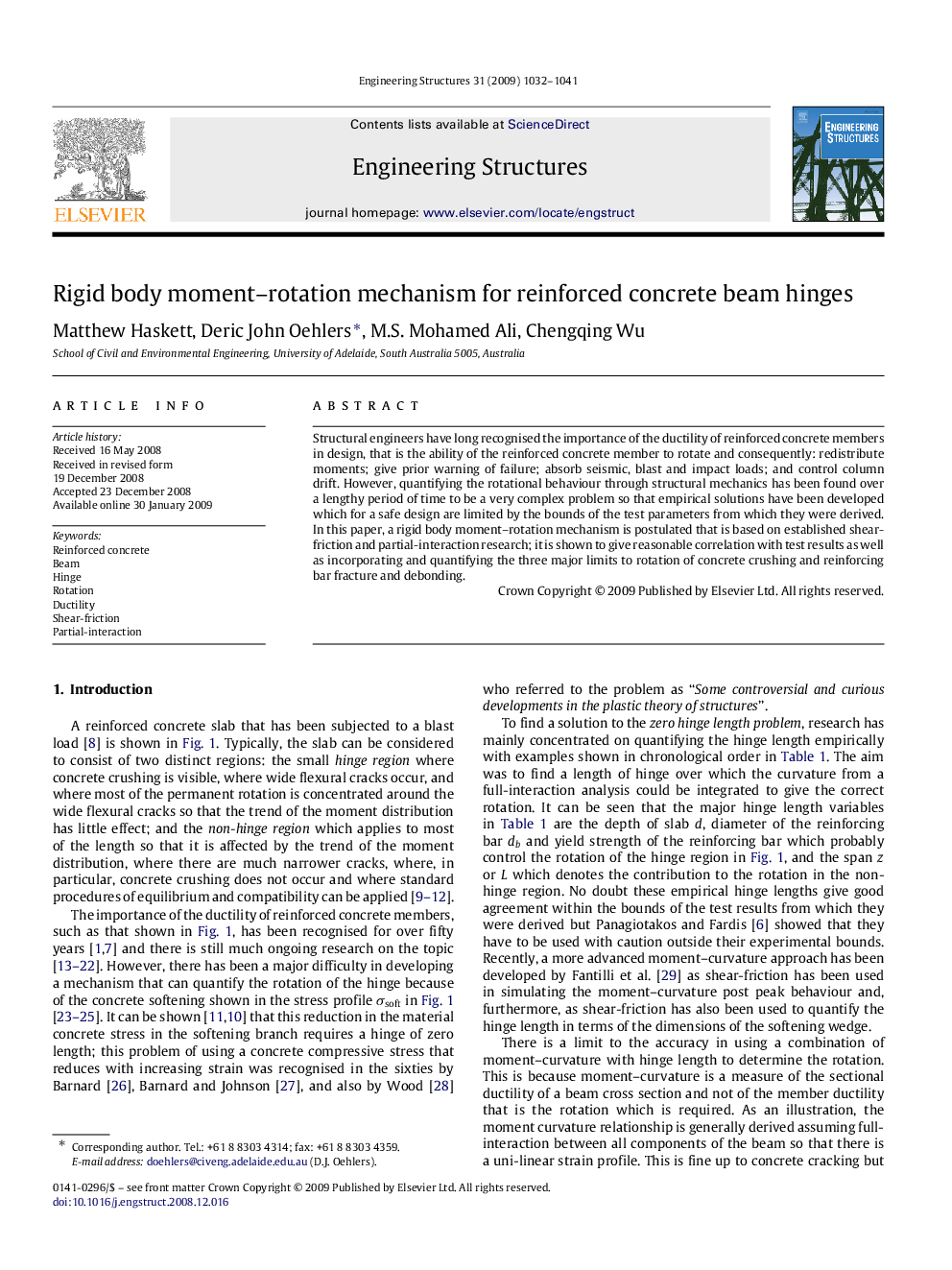| Article ID | Journal | Published Year | Pages | File Type |
|---|---|---|---|---|
| 268309 | Engineering Structures | 2009 | 10 Pages |
Structural engineers have long recognised the importance of the ductility of reinforced concrete members in design, that is the ability of the reinforced concrete member to rotate and consequently: redistribute moments; give prior warning of failure; absorb seismic, blast and impact loads; and control column drift. However, quantifying the rotational behaviour through structural mechanics has been found over a lengthy period of time to be a very complex problem so that empirical solutions have been developed which for a safe design are limited by the bounds of the test parameters from which they were derived. In this paper, a rigid body moment–rotation mechanism is postulated that is based on established shear-friction and partial-interaction research; it is shown to give reasonable correlation with test results as well as incorporating and quantifying the three major limits to rotation of concrete crushing and reinforcing bar fracture and debonding.
